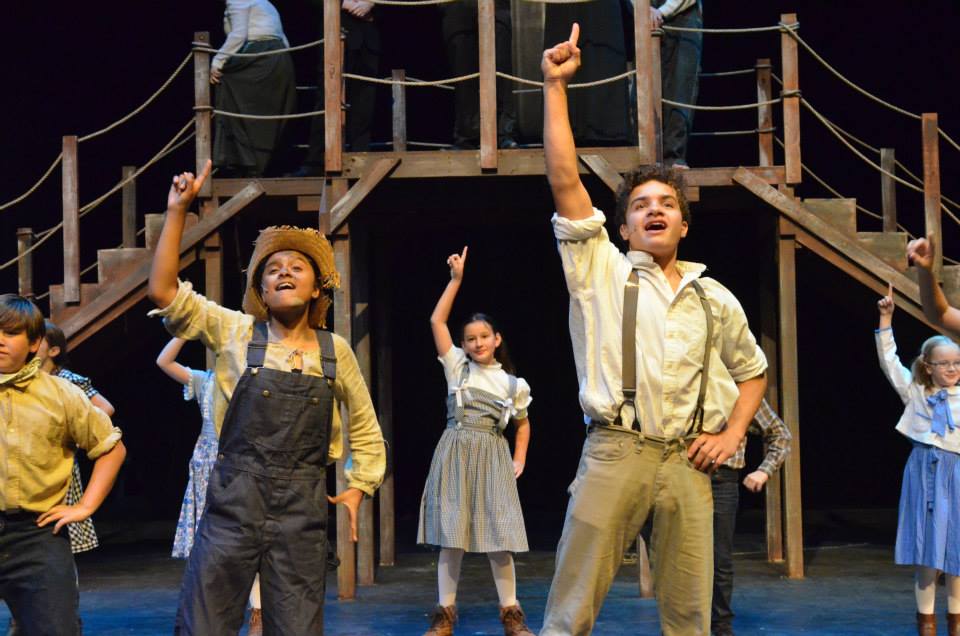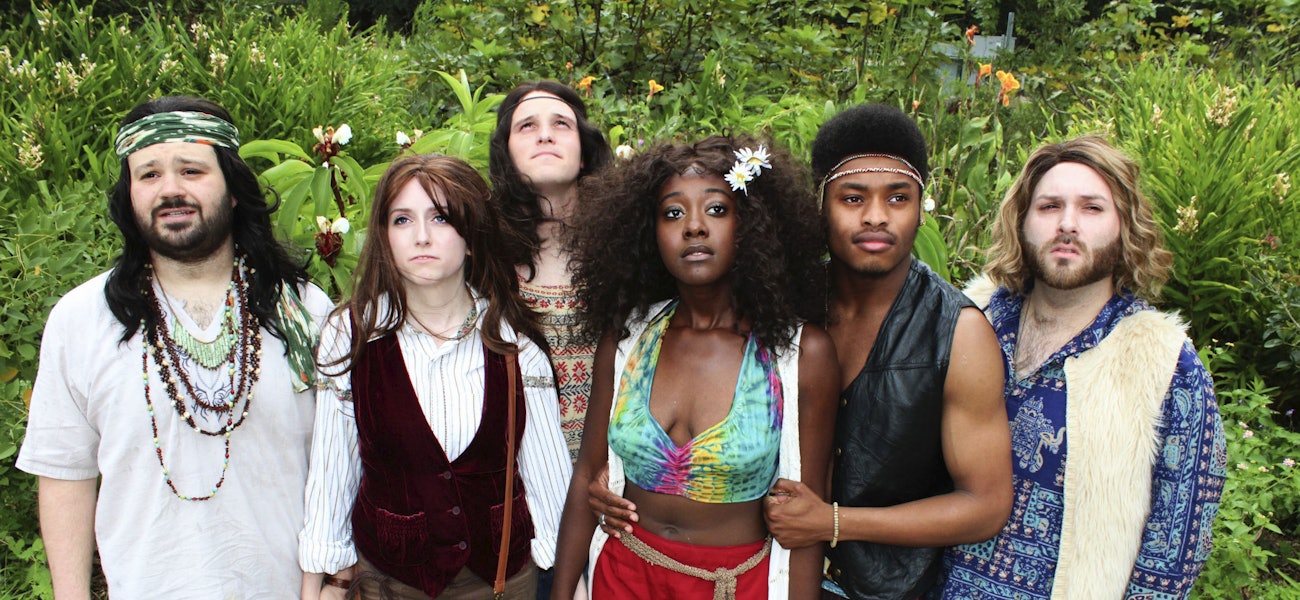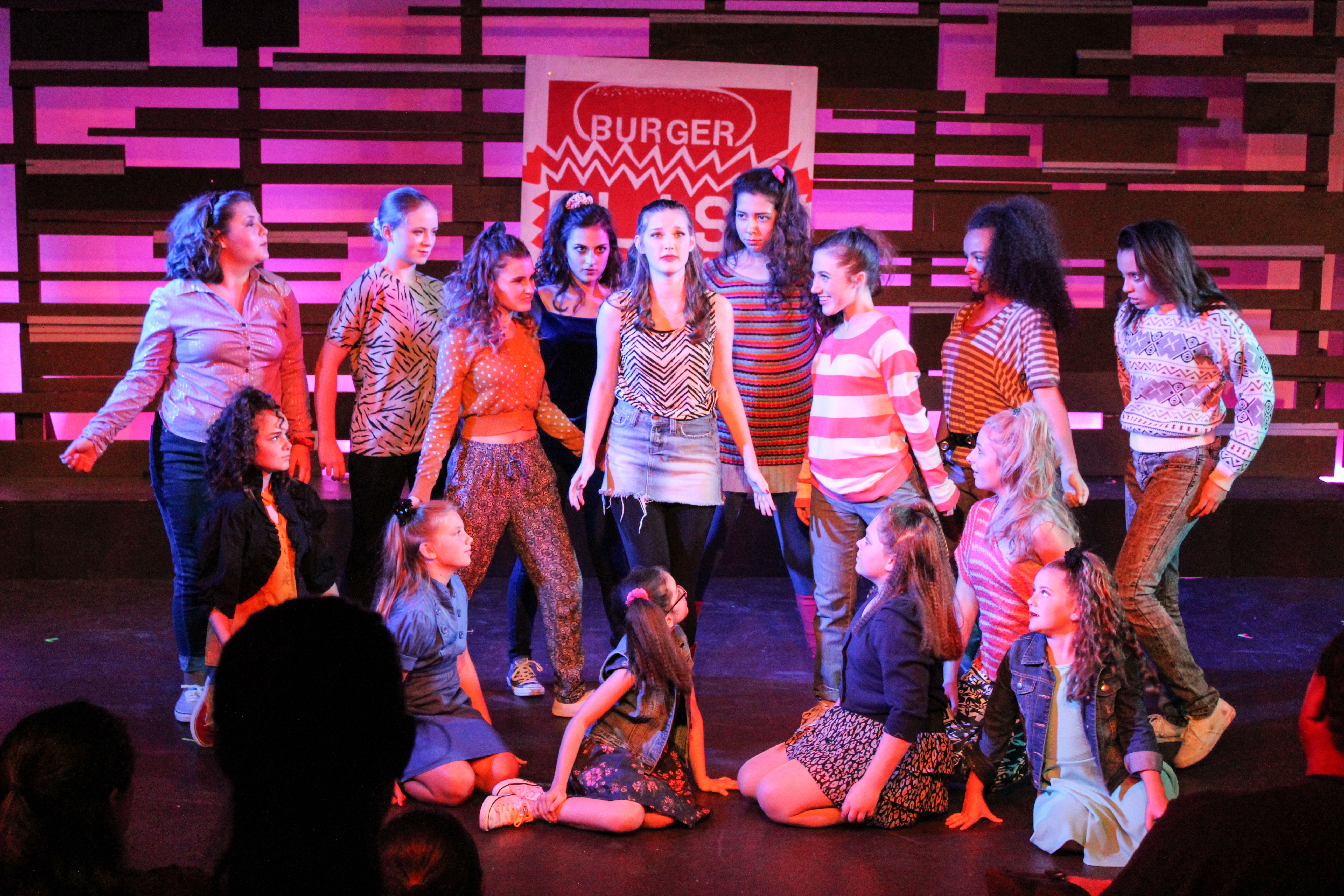TAKING THE LEAD
Theatre Baton Rouge explains why it’s important for community theater to take risks
When Theatre Baton Rouge brought counterculture rock musical Hair to the stage this year, Managing Artistic Director Jenny Ballard knew they were taking a risk.
Not only was it the 72-year-old organization’s first time doing the Broadway show, but it was also the first time in as many years that a performance featured nudity. The production ended up being overwhelmingly popular.
“I think we have a history of giving our audiences too little credit, and I think we need to start giving them the credit that is due,” Ballard says. “We live in a city that is progressive in many ways, and I think we see that represented here very well.”
Theatre Baton Rouge strives to present shows that are relevant, raise social awareness and create societal change, she says.
Its diverse 18-member play-reading committee looks for works that give an in-depth view of deep-seated issues, make audiences examine their beliefs and sends them away still thinking about those themes.
“It’s about tackling the issues that are most relevant to our community specifically,” Ballard says. “Since we are a community theater, we need to be challenging and soothing and representing effectively the community in which we live.”
The organization recently staged productions of To Kill a Mockingbird, Hair and The Rocky Horror Show as part of its current season, and will tackle shows with similar timely messages such as Cabaret and Gidion’s Knot in 2018.
Taking on productions that are relevant and appeal to a larger audience, from newcomers to long-standing patrons, is a challenge Ballard and her team look forward to each season.
“I think the minute theater stops taking risks is the minute that theater dies,” she says.
There’s a movement happening in theater, she says, where shows with specific social currency, like Hair or, more recently, the wildly popular Hamilton, are finding audiences outside of bigger cities.
With its stacked 14-show annual lineup, the group targets younger audiences to grow a future audience and cultivate the organization’s Young Actors Program, which stages smaller, youth-led productions like Footloose in September.
The secret to the theater’s longevity are its 250 volunteers who keep the organization running, Ballard says. Community theater is built upon the efforts of its cast and crew volunteers, many of whom grew up attending or participating in Theatre Baton Rouge plays.
“I don’t think I’ve ever been part of a theater that is so full of people that are so willing to learn and eager to be here,” Ballard says. theatrebr.org
—LAUREN HEFFKER
WHY ARE ARTS IMPORTANT FOR BATON ROUGE AS A COMMUNITY?
Logan Anderson, BRAC’s director of policy and research, weighs in
How are the efforts of local arts organizations impacting the Baton Rouge community?
From an economic development perspective, your arts and cultural community is an asset just like good schools, good traffic, park systems or libraries. Whether you’re talking to companies or people who are considering coming here, it’s a huge opportunity to showcase your community when you have great things going on.
How are local arts enhancing residents’ quality of life?
If you ask someone in Louisiana what they love about Louisiana, they almost always talk about something artistic, right? [It’s often] focused on the culinary arts, but if you ask further, ‘What do you do around here that you enjoy,’ it’s always, ‘Well, I like to go to LASM,’ or, ‘I’m excited to go to the Knock Knock Museum.’ Louisiana appreciates art more than Louisianans give themselves credit for. It’s something this community is really good at, but they almost don’t think of that as art because it’s so ingrained into their everyday life.
How does BRAC use this creative culture to attract new visitors and residents?
We’re known as a festival area. So when we’re touring people around, whether it’s a company in site-selection process or people being recruited to live here, one of the things that we like to showcase is that Baton Rouge does have a lot more than people would expect. And people are a little surprised but very excited to see that. And with the organizations that we have here, there’s a great deal of opportunity to get engaged with them. Getting involved in an arts organization is a great way to sort of create stickiness in people. … That’s a real strength, because it gives people the opportunity to really dive into what we have here.
—ELIZABETH MACKE
JOBS IN THE ARTS

When Kristin Sosnowsky joined the faculty in 2001, LSU’s College of Music & Dramatic Arts didn’t have an arts administration curriculum. Students could learn about acting, dance, stage design and costume construction, but not necessarily how to run a theater.
Sosnowsky helped change that, building a full degree concentration and a minor around arts administration and leading Swine Palace as a professional theater company that trains students for a career in theater.
“Students in the technical side and the administrative side—there’s a much broader and more diverse job market out there for them because there’s just not that many people working in those areas,” she says.
Being open to opportunities in professional theater helped
Sosnowsky’s own career path. “I started in a professional theater, and I realized there was a big lack of theater managers out there. So my career evolved in ways I didn’t expect. … When I came here, I was not really thinking I’d teach in theater education. With Swine Palace, we have the opportunity to produce theater that’s challenging to the students as well as the faculty in a professional setting.”
She says she’s been impressed with the amount of theater organizations in the region that have grown from LSU alums. “They provide different opportunities to stay in your hometown and encourage people to develop a career here.” theatre.lsu.edu
—BENJAMIN LEGER
SWINE PALACE
In its 25 years, Swine Palace has presented nearly 70 classical and contemporary theater productions, emphasizing works that explore issues of social equity. In doing that, the nonprofit professional theater often partners with organizations like Capital City Alliance, Louisiana State Museum, Women’s Council and Louisiana Lagniappe. The theater does it all while training students in LSU’s master’s degree programs for professional acting and technical/design. Check out Swine Palace’s The Mountaintop Nov. 10-19. swinepalace.org
PLAYMAKERS

From Junie B. Jones to Charlie Brown, iconic characters have come alive on the Playmakers’ stage this year. Working out of the Reilly Theatre at LSU, the theater group delivers mainstage and touring productions and also offers educational classes, camps and programs reaching more than 20,000 children and adults in Louisiana. Even cooler? It provides 100 jobs for local professional artists. See Playmakers’ Christmas pirates perform Jingle
ARRGH the Way! Dec. 8-17. playmakersbr.org
NEW VENTURE THEATRE
New Venture Theatre began with a mission to make performing arts more accessible to the underserved. Since the theater started in 1997, it has partnered with more than 1,000 artists of all races and backgrounds. Whether they’re presenting a rendition of The Lion King Jr. or retelling the nativity story from an African-American perspective, the New Venture Theatre crew is always mixing it up—while also developing local talent. The 2018 season will be announced at the New V Awards Dec. 2. newventuretheatre.org
—ELIZABETH MACKE
Click here to read about all the other arts in the area.
This article was originally published in the November 2017 issue of 225 magazine.









